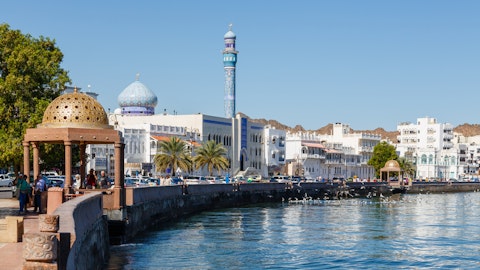In this article, we will take a look at the 15 most sexually repressed cultures in the world.
While the Universal Declaration of Human Rights guarantees every person’s freedom to believe in whatever he wishes, with which nobody, including the state, may interfere, the line is drawn when what is exercised is expression. Restrictions on the practice of expression may be imposed simply because it is an external embodiment of what individuals believe, which may clash with other people’s views, be oppressive to society’s standards, norms, or culture, or worse, be unlawful. While this is infuriating, it is an innate consequence of living in a society. And it would be extremely irritating if sexual thoughts and impulses were suppressed. While many nations have embraced modernization, certain countries remain traditional in key areas, particularly when it comes to sex and sexuality. Several variables may influence this, including religion, culture, and even politics, depending on who rules.
Sodomy laws, for example, which criminalize nonprocreative sexuality everywhere and any sexuality outside of marriage, still exist in several areas of the world, including the United States. Aside from the concept of sex, sexuality is also discussed here. In today’s society, sexuality is a controversial subject, especially with the emergence of the LBGTQ+ population, which has become more aggressive about its rights. The WHO defines sexuality as being experienced and expressed in various ways, including thoughts, beliefs, attitudes, values, wants, and fantasies, as well as in actions, practices, roles, and relationships.
In a 2023 study, researchers observed an inverse association between two domains: “psychosexual feelings” and “sexual repression,” and depression and anxiety. Participants who felt that virginity should be retained until marriage reported suffering more mentally from sexual suppression than others. Women who did not have this belief, on the other hand, had less depression and anxiety than proponents, i.e., believers in leading a chaste life.

gpointstudio/Shutterstock.com
Our Methodology
The measure of sexual repression in this article only took three aspects into account when rating the various cultures. The existence of any of these variables results in a point, which is used to assess them. These are the following factors: cultural sex restrictions, anti-sexuality legislation, and the availability of sex education. The first two criteria are based on Pearson.com’s concept of human sexuality, i.e., the ways in which we perceive and express ourselves as sexual beings. The availability of sex education is also regarded as a factor, as Pearson.com said that our knowledge of ourselves as females or men is part of our sexuality, as is our capability for sensual experiences and reactions. Our understanding of gender roles in our culture has a large impact on us. Click the following link for our list of the 20 Countries that watch the most porn in the world in 2023.
15 Most Sexually Repressed Cultures in The World
15. Japanese People
Cultural Sex Restrictions According to the findings of two Durex studies, Japan is the only country in the world where a greater proportion of people are dissatisfied with their sexual lives than satisfied. The simplest answer to Japan’s sexual problems is that they just don’t do it. Thirty-four percent of Japanese people report having sex on a weekly basis. Japanese cultural and commercial traditions severely discourage women from marrying if they want to excel at work; hence, marriage is declining. Truly, Japan’s economy resembles a perfect storm of sexlessness.
14. Iranian Culture
Cultural Sex Restrictions According to a study on sexuality in Iranian couples, sexual relations are only tolerated inside the family setting and after marriage due to the dominating discourse of religion and the sexually conservative culture of Iran. The culture of silence and the importance of hijab and modesty, particularly for women, as well as a lack of openness regarding sexuality, particularly before marriage, make it unlikely that couples will seek sexual information or be recognized as sexual beings in society.
Anti-Sexuality Legislation Homosexuality is referred to as “moral bankruptcy” or “modern western barbarism” by Iranian officials. According to Amnesty International, 5,000 homosexuals and lesbians have been killed in Iran since the 1979 revolution. Although it is less prevalent nowadays, it still happens.
Availability of Sex Education In a study entitled Sexual Health Education at Home in Iran, the researchers recognized that there is no formal or informal teaching concerning children’s sexuality, making it difficult for parents to regulate their children’s sexual behavior.
13. African Culture
Cultural Sex Restrictions – In a study conducted by Okechi, researchers found that the impact of the Eurasian assault on the African traditional system, notably the idea of sex and human sexuality, was the ensuing uncertainty among local indigenous peoples about what constituted such disparaging concepts. As a result, the notion of sex and human sexuality became “sacred” and “taboo” in the indigenous people’s subconscious psyche. Later, the notion of sex and human sexuality was ensconced in secret to the point where everything regarding human sexuality became disparaging in public statements.
Anti-Sexuality Legislation – Based on ILGA World’s report, there are 64 nations where homosexuality is illegal, with nearly half of them being in Africa. Some nations, notably many in Africa, have lately taken steps to decriminalize same-sex partnerships and promote LGBTQ rights. For instance, former Nigerian President Goodluck Jonathan signed the most dangerous anti-LGBT law in modern history; President Yoweri Museveni signed the anti-gay bill in Uganda; and Gambia’s president, Yahya Jammeh, even called for the slitting of LGBT people’s throats.
12. Arab Culture
Cultural Sex Restrictions – Sex is a complicated taboo that began in countries like Algeria, Tunisia, Syria, and Yemen because of the patriarchal culture of the local conservatism, the new, strict standards of Islamists, and the subtly puritanical ideologies of the various socialisms in the area. Many people in the West see that one of the major ills afflicting most of the so-called Arab world and the Muslim world, in general, is their dysfunctional relationship with women.
Virginity is a sensitive subject, and individuals who aren’t virgins, particularly females before marriage, are labeled as dishonorable rebels or just “wasted.”
11. Islamic Culture
Anti-Sexuality Legislation – The Middle East, in particular, is notorious for legislation and religious edicts prohibiting same-gender intercourse. While homosexual marriage is allowed in many Western nations, even touching hands with someone of the same gender can result in heavy punishment or death in Islamic countries.
Cross-dressing or dressing in women’s attire is considered unnatural or wicked in many totalitarian nations. Countries such as Brunei, Indonesia, Jordan, Kuwait, Lebanon, Malawi, Malaysia, Nigeria, Oman, South Sudan, Tonga, and the United Arab Emirates use the same laws that target transsexuals to prosecute transvestites and crossdressers.
10. Inis Beag
Cultural Sex Restrictions – Inis Beag is an Irish island community. According to a study, during the 1960s, the inhabitants of this town did not feel that orgasm was typical for women. In terms of sex, the only time individuals would freely engage in it was during marriage, which was usually planned by their parents. According to Messengers’ interviewees, this “dutiful” intercourse had almost no foreplay, and no oral sex, and had to be completed as quickly as possible. The action was always performed in the missionary posture, and partners wore the majority of their garments. Anal intercourse was supposed to have happened largely by mistake because individuals didn’t realize what they were doing. Masturbation, sex conversation, and even innocent physical closeness were all judged unacceptable. Anyone who even tried them was punished.
Availability Of Sex Education – Messengers interviewed all 350 residents and discovered that not only was sex education nonexistent, but just three mothers had given their daughters any type of heads up about what to anticipate on the wedding night, with the majority preferring to “let nature take its course.” However, today, Inis Beag is as magnificent and rough as it has always been, but it is also a contemporary place that works hard to maintain its heritage, traditions, and local customs. According to Dr. Kate Lister, a sex historian, residents will now even let guests wash without their clothing on.
9. Poland
Anti-Sexuality Legislation – In research conducted by Romanienko, it was found that both communism and capitalism wreaked havoc on the intersectionality of artistic and sexual expression in Poland. Under both production systems, powerful organizations around the church and state have been major sources of repression, relegating citizen sexuality to the mere reproduction of new generations of passive consumers.
Romanieko added that the issue of sexuality has split Polish culture, with conservative sex education in schools, a strongly established Catholic sexual morality, and a government that explicitly condemns sexuality in minors. In conservative Poland, sex education is not required.
8. Semang People
Cultural Sex Restrictions – One of the sex taboos in the world is the belief of the Semang people. The Semang claim that daylight dalliance causes wicked thunderstorms that will drown innocent people, and the offending couple—so much for an afternoon delight. Semang people forbid having sex within their own villages, lest they make the spirits angry.
7. Ganda People
Cultural Sex Restrictions – The Ganda people of Uganda restrict sexual activity both before and during the processing of the trees used to make boats, making that village’s only source of wood.
6. Aka
Cultural Sex Restrictions – Sexual intercourse is viewed by both men and women as a form of “night work” with the objective of creating children, an important topic in an area with a high newborn death rate. Sperm is necessary not just for conception but also for embryonic development. A pregnant woman will see intercourse as helpful to the health of her fetus.
The Hewletts state that homosexuality and masturbation are uncommon or nonexistent not because they are despised upon or punished but rather because they are not part of the ethnic group’s cultural concepts of sexuality.
Women may hunt, even by themselves, and frequently control resource distribution among the forager Aka, whose gender equality is described by the Hewletts as “about as pronounced as human societies get.”
5. Ngandu
Cultural Sex Restrictions – The Ngadu share the same sex and sexuality beliefs with the Aka, but the Ngandu are fixed-site, slash-and-burn farmers who exhibit significant gender inequality, with men frequently controlling women.

4. Kimam
Cultural Sex Restrictions – According to the Kimam, women are the creators of life and are condemned to die. Men, on the other hand, bring life from the dead, as seen by their ability to boost the yield of yams through ritual. This power is emphasized by older men’s claim that they can engineer socially desirable men out of young boys by transferring sperm from older men to young boys, either directly through sexual contact or by massaging their bodies with sperm previously collected with the assistance of young girls. These actions are interpreted as a desire to maintain masculine potency and authority by shielding mature men from the impurity and danger of adult women and menstrual blood.

Yupa Watchanakit/Shutterstock.com





